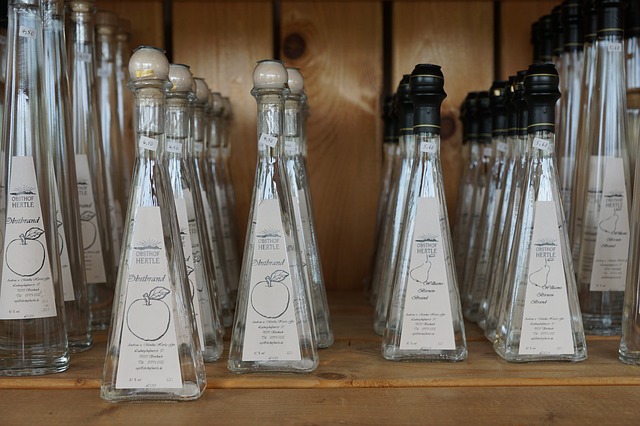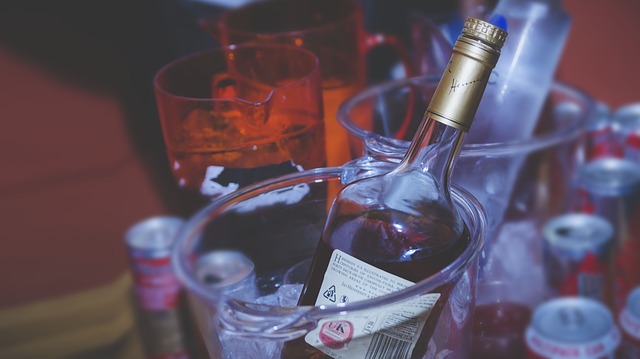THE LESSER KNOWN FRENCH BRANDY: ARMAGNAC
Most people have heard of the Brandy called Cognac, but how many know about Armagnac, a brandy made just 100 miles south from the Cognac region of France? Armagnac is actually even older than Cognac and has been made for centuries longer. Despite this, it has not been a very popularly known Brandy throughout the world for decades.
Armagnac must be made in a certain region of France or else it is just an imitation, not the real thing. This is mostly due to the climate, soil, oaks barrel types, and grapes that are all found in that region and nowhere else together. It might all sound a bit particular, but the right mix is necessary to produce the unique, earthy, and rich taste of true Armagnac.
HOW IS ARMAGNAC MADE
This Brandy is made from a distilled wine base. It is distilled once before being aged. The wine starts off with a fairly high alcohol content, but the distillation yields a lower proof than many other types of Brandy. Because of this, it is usually not diluted at all after it is finished aging. Stronger Bandies generally have to be diluted in order to be below the required alcohol content for a Brandy.
The technique for distilling Armagnac tends to make it a very aromatic Brandy. That is one thing that people find very appealing about this type of Brandy, because other Brandies that are distilled twice do not carry the same aromatic characteristics.
Aging takes place in oak barrels. Some of the most popular barrels to age the Brandy in are specially made from a forest in Monlezun. This particular type of oak is much darker than regular oak types, adding beautiful colors and wonderfully rich flavors to the Armagnac Brandy. Unfortunately, the supply is not large enough to meet all the demand for barrels, so many are aged in other types of oak instead. Aging in these barrels takes place just for a few years before the wine is usually then placed into a plain oak cask to finish aging for longer.
LABELS FOR ARMAGNAC
When you read the label of a bottle of Armagnac, you can get a general idea about the types of flavors that will be included within the Brandy. This is because the aging process has a lot to do with the taste, so those that are younger will be fruitier and those which are older will have more earthy tastes and hints of spice. Of course that is a generalization and there are some artisanal Armagnac Brandies that will not match that quota, but you can apply it to many different brands and types.
There are the labels you’ll find on the bottle:
- VS: This stands for Very Superior. It is aged between 2 – 5 years, although probably closer to 2 years than 5 as the consumer market for this type of Brandy has been demanding younger, more neutral products.
- VSOP: It is short for Very Superior Old Pale. These have been aged between 5 – 6 years, a strangely particular label for this type of Brandy, although the flavor difference made in just one year can be extensive.
- XO: Extra Old is what this stands for, and it has been aged between 6 – 10 years. These are very common with Armagnac as well, because the spice and earthy flavors are generally quite strong at this age.
- Hors D’age: This is the oldest type of Brandy available. It has been aged for at least 10 years, but may have sat for as many as 35 years. Past the age of 35, most Brandy will not be able to survive the evaporation that occurs during the aging process.
TYPES OF ARMAGNAC
As far as Armagnac is concerned, there are no distinct types. What can be said about it is that there are different vintages of this Brandy. Vintages all list the years that they were created and they can command a very high price in the market. You might find some vintage Armagnac from the late 1800s that goes for thousands of dollars! Each vintage has a different flavor based on how it was brewed and aged for that specific year, so you can enjoy a variety of tastes from the same familiar brands by simply choosing a different vintage bottle.
As mentioned earlier in this article, the age of the Armagnac has a lot of effect on the tastes you will get when you drink it. Those that are aged less will almost always have a fruitier taste and a lighter feel. Even their color will usually be lighter because they did not have as much time to absorb the colors from the barrel they were aged in.
Older Armagnac that has been aged longer will generally display amazingly rich tastes of spices, figs, herbs, caramel, and other deliciously earthy flavors. They are usually darker and have a heavier feel to them.
CHOOSING THE BEST ARMAGNAC BRANDY
Armagnac does not have a best or a worst, because it all depends on what you like the most. Those who are searching for a lighter, fruitier, more wine-like Brandy should look for a younger Armagnac that did not take as much time to age in the oak barrels, such as a VS or some VSOPs. You might also look for those flavored with herbs and florals or aged within lighter oak barrels for a more vanilla, fruity, or herbal taste. Anyone who likes the taste of spices and earthy aromas should look for an Armagnac which has had time to age, such as the XO or Hors D’age.

